In the annals of wartime heroism, tales of courageous soldiers often stand paramount, yet the extraordinary story of Smoky the Yorkshire Terrier war dog offers a unique perspective on resilience, loyalty, and the profound bond between humans and animals in the most challenging circumstances. Discovered in a foxhole in the jungles of New Guinea during World War II, this tiny Yorkshire Terrier embarked on an incredible journey alongside her owner, Corporal William “Bill” Wynne, becoming a decorated war dog, a pioneer in animal-assisted therapy, and a beloved figure whose legacy continues to inspire. Her remarkable contributions not only saved lives on the battlefield but also provided immeasurable comfort and hope to countless soldiers, making her one of history’s most celebrated canine heroes.
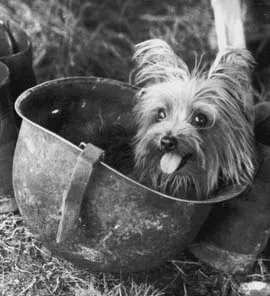

From Jungle Find to Unlikely Companion: Smoky’s Early Days
The story of Smoky and Bill Wynne began in the tumultuous year of 1944. Bill Wynne, drafted in 1943, was serving as an aerial photographer with the US Army Air Force’s (USAAF) 26th Photographic Reconnaissance Squadron, stationed at the Hollandia Airfield Complex in Nadzab, New Guinea. The New Guinea Campaign itself, lasting from January 1942 to August 1945, was a critical and brutal chapter in the Pacific Theater, with the Japanese occupation posing a significant threat to Allied forces and Australia.
In March 1944, a pivotal moment occurred. Bill’s tentmate, Ed Downey, stumbled upon a small dog in a foxhole near Hollandia after his Jeep broke down. He brought the dog back to base, where she was initially given to Sergeant Dare. Bill Wynne, a passionate dog lover, soon encountered the tiny pup. After some negotiation, Bill acquired the dog for two Australian pounds (approximately $6.44 USD), a sum Dare needed for a poker game. Bill named her Smoky, and thus began an inseparable partnership.
Caring for a small Yorkshire Terrier war dog in a harsh jungle environment presented considerable challenges. There was no commercial dog food available, so Smoky’s diet consisted of soldier rations like bacon, ham, eggs, and bully beef. Bill gave her daily baths in his helmet to keep her free from ticks and other insects, a testament to his dedication. Despite these difficulties, Smoky thrived. Bill quickly discovered her intelligence and eagerness to learn, teaching her various commands and tricks. Their impromptu shows for the troops quickly made them a popular duo on the base.
Smoky’s charisma soon earned her broader recognition. In 1944, she won “The Best Mascot of the Southwest Pacific Area” contest, organized by the military publication Yanks Down Under. This early recognition would later prove invaluable. Her therapeutic impact was first observed when Bill contracted dengue fever and was hospitalized at the US 233rd Field Hospital in Nadzab. Bill’s friends, along with Smoky, visited him and shared the news of her contest win. Nurses, witnessing Smoky’s ability to uplift patients, sought permission from the commanding officer, Dr. Charles W. Mayo (whose family founded the renowned Mayo Clinic), for Smoky to join their rounds. Dr. Mayo, seeing the smiles and joy she brought, granted permission. Smoky was allowed to sleep in Bill’s bed and spent her days comforting wounded and sick soldiers, laying the groundwork for her future as a pioneering therapy dog.
After Bill’s discharge, his squadron doctor arranged recuperative leave in Brisbane, Australia, for him and Smoky. It was here that Smoky’s therapeutic talents were further utilized. At the request of American Red Cross Assistant Field Director Barbara Wood Smith, Bill and Smoky performed for patients at the US Navy 109th Fleet Hospital and the Brisbane US Army 42nd General Hospital. Their performances, including Smoky’s famous “dead dog” act, brought immense joy and laughter to war-weary troops. Barbara Wood Smith later penned a heartfelt thank you letter to “Cpl. Smoky,” acknowledging her profound impact on soldier morale.
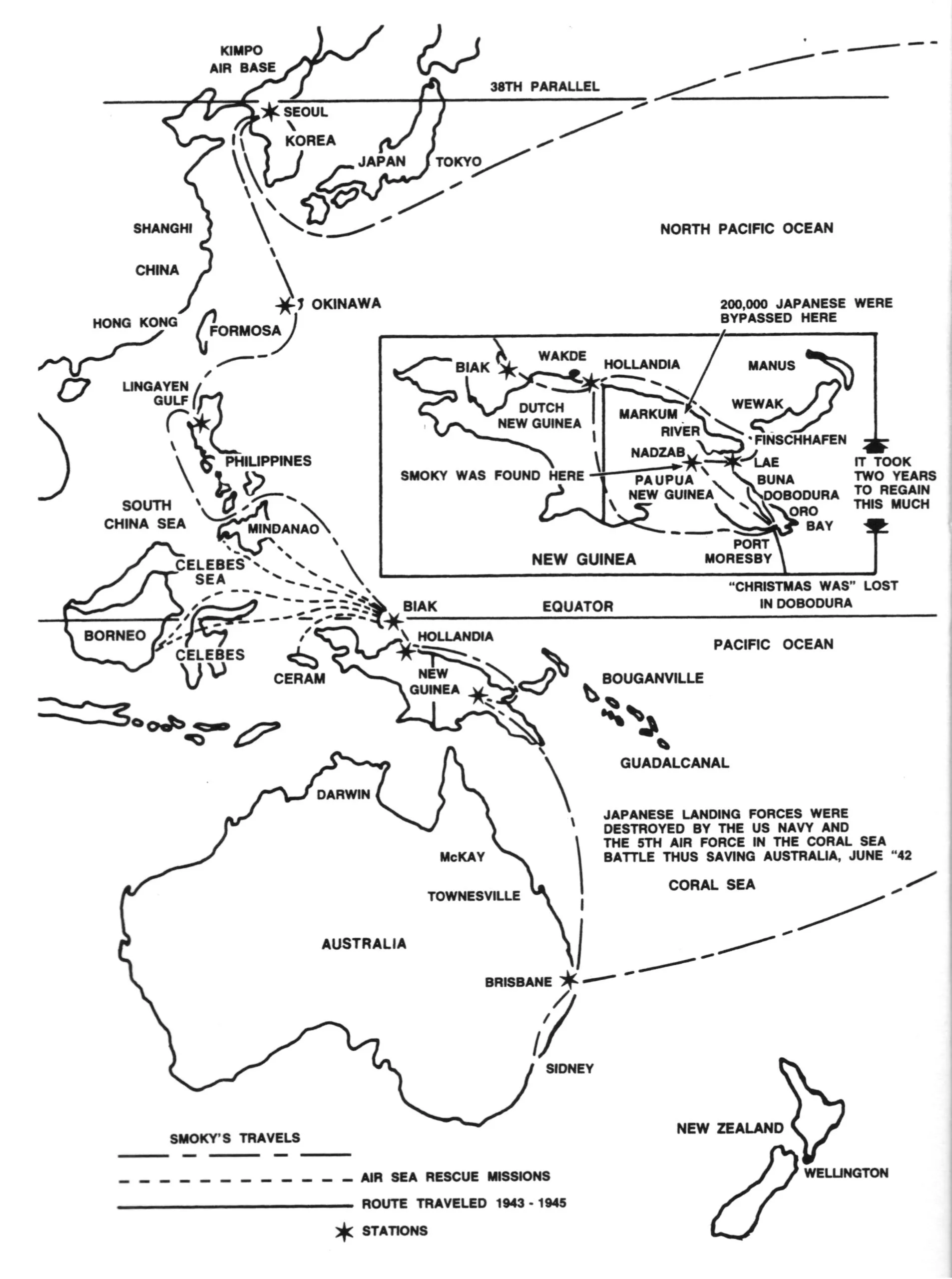

Smoky’s Combat Missions: A Mascot on the Front Lines
Following their time in Australia, Bill and Smoky returned to their squadron, which had moved to Biak Island after its capture from the Japanese. The Battle of Biak (May-August 1944) was a crucial Allied victory, securing Mokmer Airfield, which was vital for the impending invasion of the Philippines.
In September 1944, Bill accepted a new assignment, transitioning from the photo lab to flying with the 3rd Emergency Rescue Squadron, searching for downed pilots. His initial missions involved flying in a Stinson L-5 Sentinel, a small plane that often flew as low as 50 feet above ground to survey crash sites. The inherent dangers of these missions became apparent to Bill’s friends, prompting concerns about who would care for Smoky if he didn’t return.
For his subsequent missions, Bill was assigned to a PBY Catalina, an amphibious “flying boat” known for reconnaissance and search and rescue. Smoky became an unofficial crew member, often flying inside a canvas musette bag. Bill humorously vouched for her as a good luck charm, which the crew readily accepted. In his post-war memoir, Yorkie Doodle Dandy, Bill recounted a harrowing incident where he and Smoky were replaced at the last minute by an extra medic on a mission to rescue six downed men. The aircraft and the men in the raft were never seen again, a stark reminder of the ever-present dangers and a testament to what Bill considered miraculous luck. For those interested in seeing her story come alive, you can find more about smoky the war dog movie.
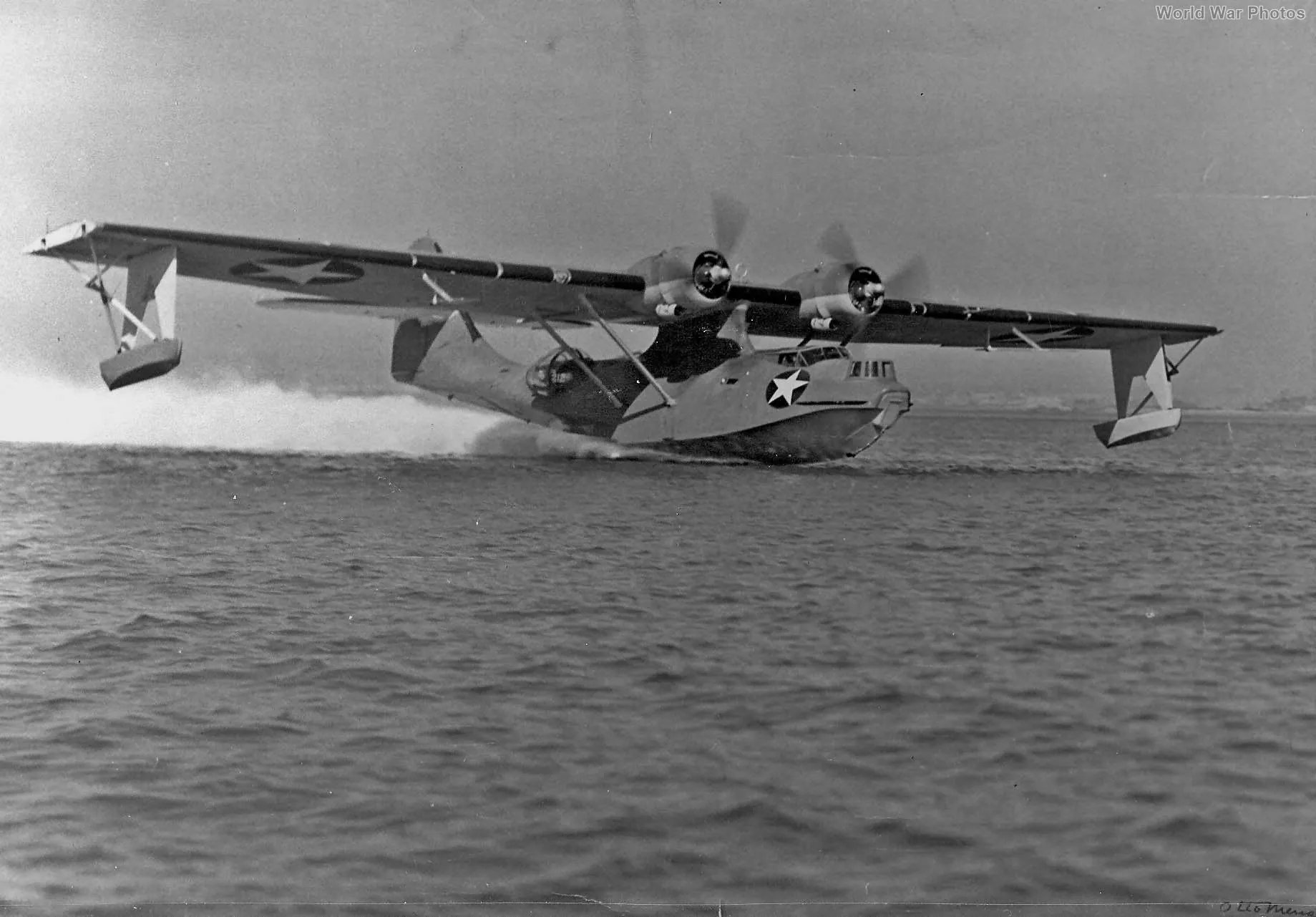
The Hero of Lingayen Gulf: Smoky the War Dog’s Defining Moment
As WWII progressed, the 26th Photo Recon Squadron moved to the Philippines. It was here, at Lingayen Gulf, that Smoky the Yorkshire Terrier war dog transcended her role as a mascot and truly became a hero, distinguishing herself with an act of incredible bravery and ingenuity.
A critical communications line needed to be strung through a 70-foot-long, 8-inch-diameter culvert running beneath an active airstrip runway. Engineers estimated that completing this task manually would require approximately 70 men digging for three days, effectively shutting down the airfield and exposing them to constant Japanese air attacks. Such an operation would have been extremely perilous and time-consuming.
Enter Smoky. Bill Wynne devised a plan. He tied a string, attached to the critical communication wire, to Smoky’s collar. From the other end of the culvert, he called to her. After some initial hesitation, Smoky bravely navigated the dark, cramped, and dirt-filled pipe. In Bill’s own words, as recounted on NBC-TV: “I tied a string (tied to the wire) to Smoky’s collar and ran to the other end of the culvert . . . (Smoky) made a few steps in and then ran back. Come, Smoky,’ I said, and she started through again. When she was about 10 feet in, the string caught up and she looked over her shoulder as much as to saywhat’s holding us up there?’ The string loosened from the snag and she came on again. By now the dust was rising from the shuffle of her paws as she crawled through the dirt and mold and I could no longer see her. I called and pleaded, not knowing for certain whether she was coming or not. At last, about 20 feet away, I saw two little amber eyes and heard a faint whimpering sound . . . at 15 feet away, she broke into a run. We were so happy at Smoky’s success that we patted and praised her for a full five minutes.”
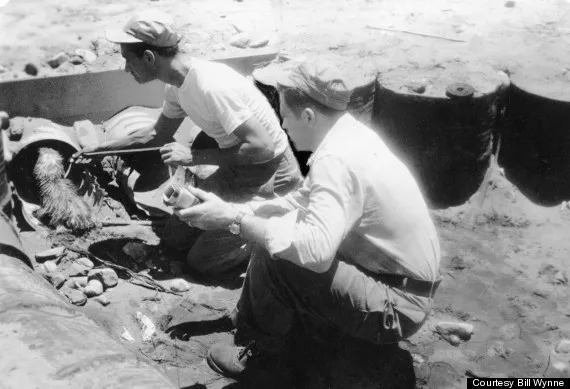

Smoky completed this vital task in an astonishing three minutes, saving countless man-hours and potentially many lives. This act cemented her status as a true war dog hero. Whenever his duties permitted, Bill continued to take Smoky to visit hospitals, entertaining wounded soldiers, and putting on shows for local communities and children’s groups wherever the 26th Photo Recon was based.
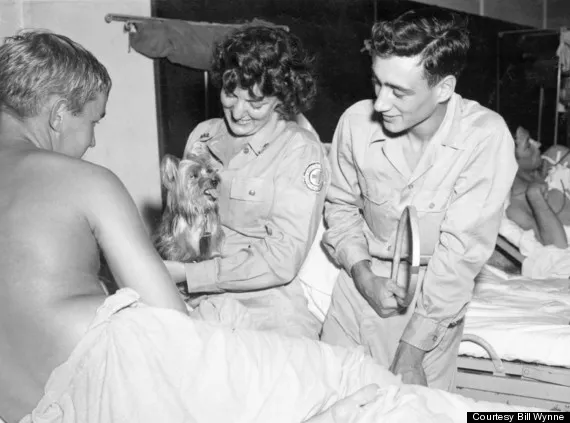

A Covert Return and Official Recognition: Journey Home
After their pivotal roles in the Philippines, Okinawa, and Korea, the 26th Photo Recon Squadron received orders to return to the United States on November 1, 1945, aboard the USS General William H. Gordon. A significant hurdle emerged: a strict US Army regulation reportedly prohibited animals on War Department ships returning to the US. Bill, however, was resolute; he could not leave Smoky behind.
He devised a daring plan to smuggle Smoky aboard the ship inside an oxygen carrying case. Miraculously, Smoky remained silent, and the case went uninspected. Bill found a discreet top bunk, stacked five high. The next morning, with 5,000 men on board, an announcement was made for anyone who brought a dog to report to the troop office. Bill, choosing to keep Smoky hidden, did not respond. He later learned that a friend, Randall, with his dog Duke, had complied. Duke was ordered off the ship, but fate intervened when a sailor offered to hide Duke in the ship’s hold, already concealing two other dogs.

As the ship sailed from Inchon Harbor, Korea, towards Washington state, rough seas led to severe seasickness for Bill. His friends from the 26th squadron would discreetly take Smoky to the upper deck for “potty” breaks, forming a protective ring around her to keep her hidden.
Eventually, another, more urgent announcement summoned all men who had brought dogs or monkeys to the ship’s office. Still unwell, Bill reported, finding five other “guilty” men there. Retreating to his bunk, Bill vowed to keep Smoky concealed. However, a US Navy officer, searching for someone else, discovered the tiny Yorkshire Terrier war dog. When questioned, Bill admitted Smoky was not registered. An hour later, he was called back to the ship’s office. Explaining his earlier illness, Bill presented evidence of Smoky’s service: photos of her entertaining the sick and wounded, the commendation letter from the American Red Cross, and her 1944 title as “The Best Mascot of the Southwest Pacific Area.” He was informed he might have to pay a bond of up to $1,000 to bring Smoky into the US, terms Bill readily accepted. A document, “Declaration of Domestic Animal,” was signed by Bill and the ship’s captain, absolving the ship of responsibility for “one dog.”
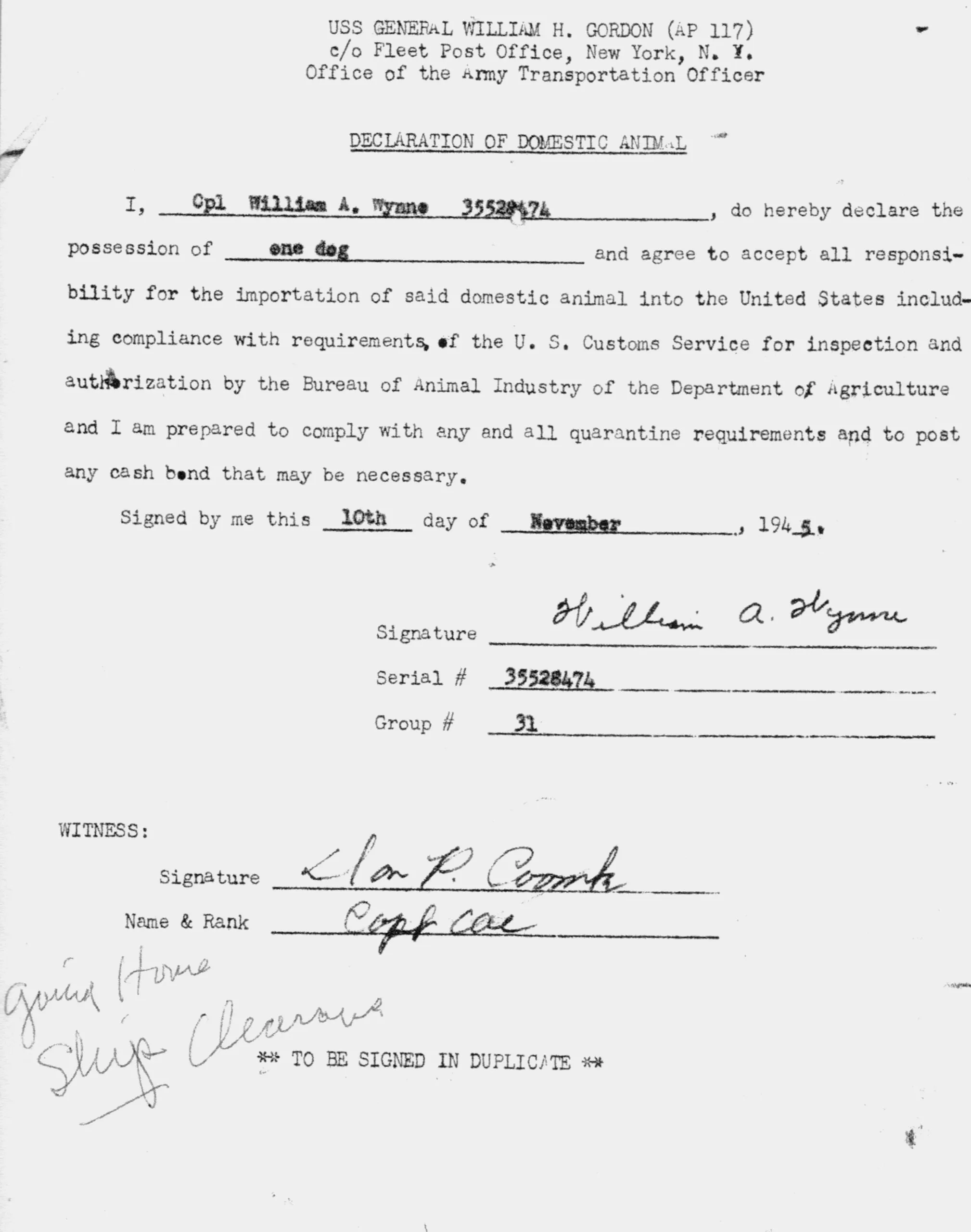
With Smoky officially recognized, Bill and his remarkable Yorkshire Terrier war dog put on shows for the men on deck, often observed with smiles by the ship’s captain and troop commander. Daily, sailors brought Duke up from the hold to play with Smoky. On November 13, the USS William H. Gordon finally docked in Seattle, bringing Smoky’s extraordinary wartime journey to a close.
Post-War Fame and Enduring Legacy
Upon their arrival in the US, Smoky and Bill’s story quickly captured the nation’s attention. At a train stop en route to Bill’s home in Ohio, a USO representative noticed Bill carrying Smoky. Their incredible tale led to a story in the Indianapolis Star, which was then picked up by a wire service. On November 30, 1945, Bill and Smoky arrived home in Cleveland, Ohio.
Just a week later, the Cleveland Press featured a front-page story headlined “TINY DOG HOME FROM THE WAR” on December 7, 1945. Major newspapers like the New York Daily News and Chicago Tribune also published their story. Bill, who had given his fiancée, Margie Roberts, an engagement ring before the war, married her on September 28, 1946.
Smoky and Bill continued their mission of lifting spirits after the war, performing at veterans’ hospitals, schools, orphanages, nursing homes, and other organizations. From June to August 1946, Bill was hired by the Cleveland Zoo, with Smoky starring in a traveling circus. In 1947, they became part of the popular Cleveland children’s live television show Castles in the Air. Bill later embarked on a distinguished 31-year career as a photojournalist for The Plain Dealer, earning numerous awards, and was even a Pulitzer Prize finalist in 1973. Meanwhile, Smoky continued to touch lives.
On February 21, 1957, Bill returned home to find Smoky had passed away peacefully in her sleep. Overwhelmed with grief, Bill, Margie, and their children buried the beloved Yorkshire Terrier war dog near “Our Tree”—a gray beech tree where Bill and Margie had carved their initials in 1940.
A poignant discovery followed when Josephine Robertson, a writer for The Plain Dealer, published Smoky’s obituary. Grace Guderian Heidenreich, a former US Army nurse in New Guinea, recognized elements of the story. Her own Yorkshire Terrier, named “Christmas” (one of the words that elicited an excited response from Smoky), had disappeared from a Bob Hope USO show in New Guinea in early 1944. With photos and shared memories, Bill concluded that his cherished Smoky was indeed Grace’s lost “Christmas,” found serendipitously in that foxhole. Margie Wynne passed away in 2004, having raised nine children with Bill.
In 2003, efforts began to honor Smoky with a monument. Bill tirelessly searched for Smoky’s long-lost grave and eventually found the fallen beech tree with their initials. Smoky’s remains were exhumed and placed in a WWII .30 caliber ammunition case. On Veterans Day, November 11, 2005, a monument dedicated to Smoky and all dogs of war was unveiled near her burial site in Cleveland’s Rocky River Reservation Metropolitan Park. Bill Wynne often stated that Smoky taught him far more than he ever taught her. Bill Wynne passed away on April 19, 2021, at the age of 99. To delve deeper into Smoky’s inspiring story, consider watching the smoky the war dog movie.
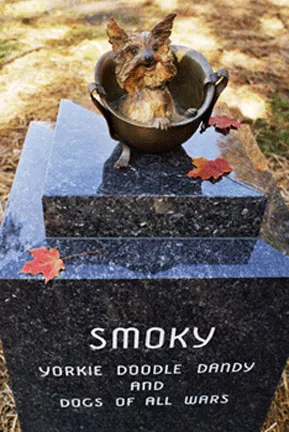
Smoky’s Eternal Impact: Pioneer Therapy Dog and War Hero
Smoky’s contributions extended far beyond the battlefield. She is widely recognized as the first documented therapy dog, initiating her remarkable work in 1944 in New Guinea, a role she continued throughout WWII and for many years after, alongside Bill Wynne. Her ability to bring comfort and smiles to the wounded and weary set a precedent for animal-assisted therapy.
Smoky’s legacy has been honored with numerous posthumous awards and remembrances:
- 1995: Inducted into the Ohio Veterinary Medicine Association “Animal Hall of Fame,” Columbus, Ohio.
- 2003: The 26th Air Space Intelligence Squadron, successor to Bill’s WWII unit, displayed Smoky’s memorabilia at Hickam Air Force Base, Hawaii.
- 2006-2007: Her war blanket was featured in the “Animals of War Exhibit” at The Imperial War Museum, London, England.
- 2010: Awarded the “War Dog Operational Medal” by the Australian Defense Force Trackers and War Dogs Association.
- 2010: A bronze statue of Smoky in a helmet was displayed as part of an “Animals of War” exhibit at The World War II Museum, New Orleans, Louisiana.
- 2011: Received the People’s Dispensary for Sick Animals “Certificate of Bravery and Devotion,” England.
- 2012: Honored by the Royal Brisbane and Women’s Hospital, Brisbane, Australia.
- 2014: Awarded the Australian “War Dog Medal” by the Australian War Dog Museum, Sydney, Australia, backdated as the first combat medal for a dog.
- 2015: Recognized in Papua New Guinea.
- December 11, 2015: Received the “Purple Cross” from the Australian Royal Society for the Prevention of Cruelty to Animals, a rare and high honor for animal war heroes, making her only the tenth animal in 163 years to receive it.
Smoky’s incredible journey sheds light on the broader “Dogs for Defense” program during WWII, which saw pet owners donate their dogs for military patrol and guard duties after the Pearl Harbor attack. For more information about this program, visit Dogs for Defense.
For those seeking to delve deeper into the life of this extraordinary Yorkshire Terrier war dog, William A. Wynne’s memoir Yorkie Doodle Dandy (Or, The Other Woman Was A Real Dog) provides an intimate account from Smoky’s best friend. Another wonderful book, Smoky, the Dog That Saved My Life, The Bill Wynne Story by Nancy Roe Pimm, was written in consultation with Bill Wynne himself.
Conclusion
Smoky the Yorkshire Terrier war dog was much more than a military mascot; she was a lifeline, a hero, and a pioneer. Her remarkable courage in the face of danger, particularly during the critical culvert mission, demonstrated an intelligence and bravery that saved countless lives. Beyond her heroic deeds, her gentle spirit and ability to provide comfort to wounded soldiers cemented her legacy as the world’s first documented therapy dog. Smoky’s story is a powerful reminder of the extraordinary bond between humans and animals, and the profound impact a small dog can have on the course of history and the hearts of many. Her memory lives on, inspiring generations and ensuring that the sacrifices and contributions of all animal heroes are never forgotten. To continue exploring her incredible journey and the enduring bond she shared with Bill, learn more about smoky the war dog movie.
References
- Wynne, William A. Yorkie Doodle Dandy (Or, The Other Woman Was A Real Dog).
- Pimm, Nancy Roe. Smoky, the Dog That Saved My Life, The Bill Wynne Story.
- O’Konski, S. R. “Smoky the Yorkshire Terrier: WWII War Dog Hero.” World War 2 History Short Stories, ww2history.org.
- American Red Cross letter dated September 19, 1944. © Smoky War Dog LLC.
- “Dogs for Defense.” Smithsonian National Museum of American History. Available at: https://americanhistory.si.edu/blog/dogs-defense.
